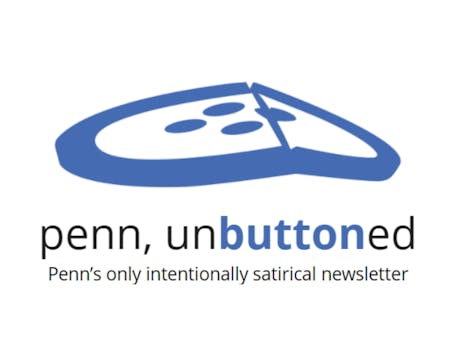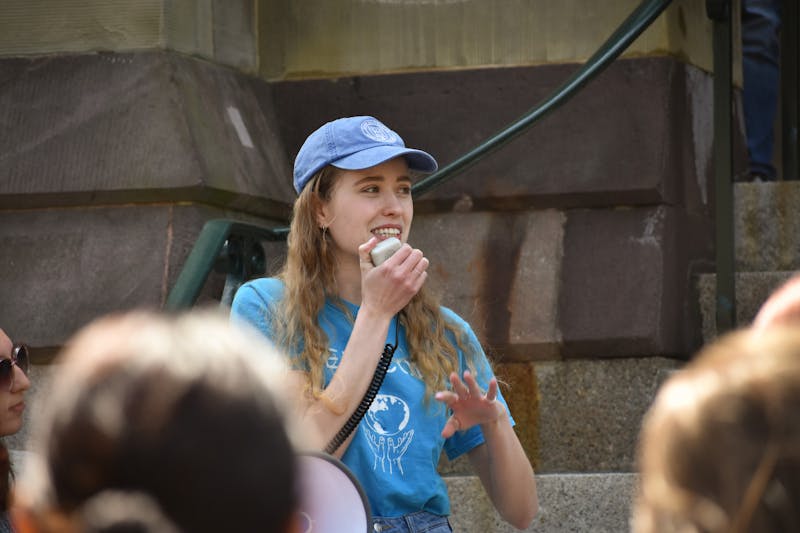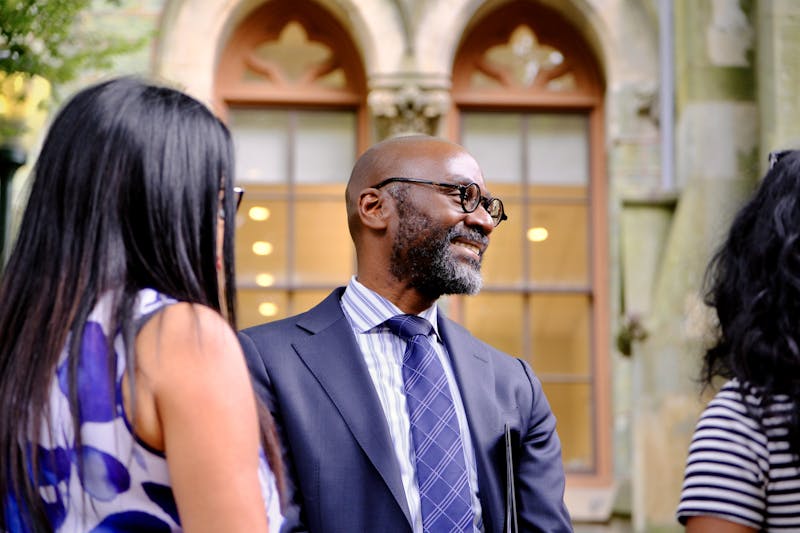AT COURTISDE: The young Quakers got another lesson from the Ivy League champs. PRINCETON, N.J. -- After Penn's first game against Princeton, Harvard basketball coach Frank Sullivan assessed the Quakers' chances of defeating the Tigers in their second meeting. The young Quakers would do better in their next go-around, Sullivan said, because playing Princeton is a learning experience that should eventually provide the answers to defeating the Tigers. After Penn's 86-73 defeat at the hands of the Tigers, it is painfully obvious the Quakers still have a lot to learn. Princeton is a team built around a system rather than players. While the names have changed through the years, the style of play has remained the same. Princeton teams have always been known for their backdoor cuts and dead-eye shooting, but not the offensive explosions they have had in their last two games against Penn. In the first game at the Palestra, the Tigers shot 76.2 percent from the field in the second half. Penn had no solution for the Tigers' perfectly executed offense. Penn's chances of winning last night depended on its ability to gain from its humbling experience and prevent a repeat performance. The questions were soon answered as Princeton ran out to a 33-18 lead late in the first half. The Tigers emphasized a new problem for the Quakers, the screen leading to an open three-pointer. In building a 40-30 half-time lead, Princeton shot 59.3 percent from the field and 6-of-13 from downtown. "[The Tigers] are playing at a confidence level that is allowing them to step up and make shots that are seemingly difficult," Penn coach Fran Dunphy said. "Some of their shots were wide open, but they also made a lot of good shots." The halftime break did not provide Penn with any insight into stopping Princeton. When the Tigers made two early three-pointers off of screens and two quick, cutting layups it became apparent the first half was not an aberration. The Tigers actually shot better from the field in the second half as they scored 46 points, an almost unheard of total for a half for Princeton. "It was a learning experience for the next three years," Penn guard Michael Jordan said. "You can't sleep on any possession, because they make you pay for it." Jordan and his teammates must figure out how to contain the Tigers' patented backdoor cut if they hope to shut down the Princeton offensive flow. All too often, a Princeton player was seen streaking toward an open hoop. The result was either an uncontested layup or a foul call against one of Penn's two big men, Paul Romanczuk and Geoff Owens. "We did not take away that many backdoor layups," Dunphy said. "When they make four or five, it seems like 12 or 13." Penn's lack of a learning curve was also evident against Princeton's defense. The Tigers continued to take away the three-pointer from Penn, limiting the Quakers to just two from downtown until late in the game. Penn's designated bomber, Garett Kreitz, after making only one three-pointer in the first game, had only one shot, a miss, from beyond the stripe. "You know [Sydney] Johnson is guarding him," Dunphy said. "So he won't get too many good shots. But you'd like to think he'd get a couple of good looks." The lack of a three-point weapon prevented Penn from getting back in the game after Princeton opened up a double-digit lead. While the Tigers would hit 11 threes in the game, Penn often could answer with only a two-point basket of its own. Exacerbating the problem was Romanczuk's continued struggle with foul trouble. For the second time this year against Princeton, Penn's best inside threat spent a third of the game on the bench. The Tigers will play their next game in the NCAA tournament, while the Quakers will be left trying to figure out how to avoid another March at home. Penn failed its two tests against the Tigers this year, and an A performance next year will only come with a lot of studying.
The Daily Pennsylvanian is an independent, student-run newspaper. Please consider making a donation to support the coverage that shapes the University. Your generosity ensures a future of strong journalism at Penn.
DonatePlease note All comments are eligible for publication in The Daily Pennsylvanian.







